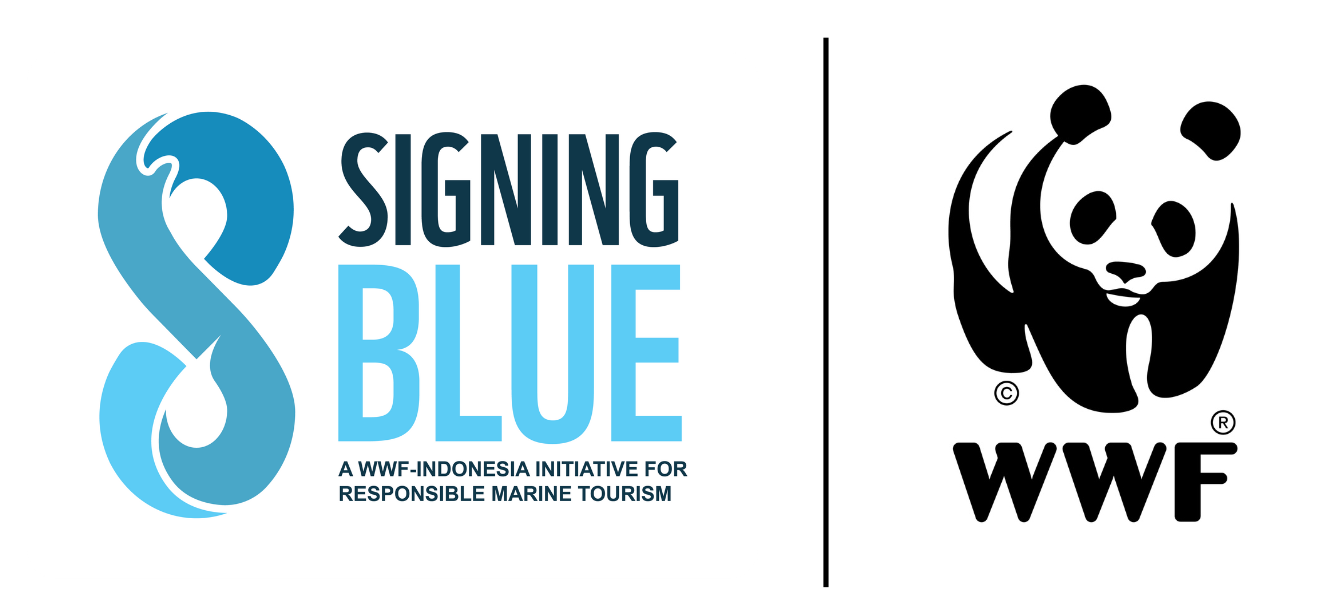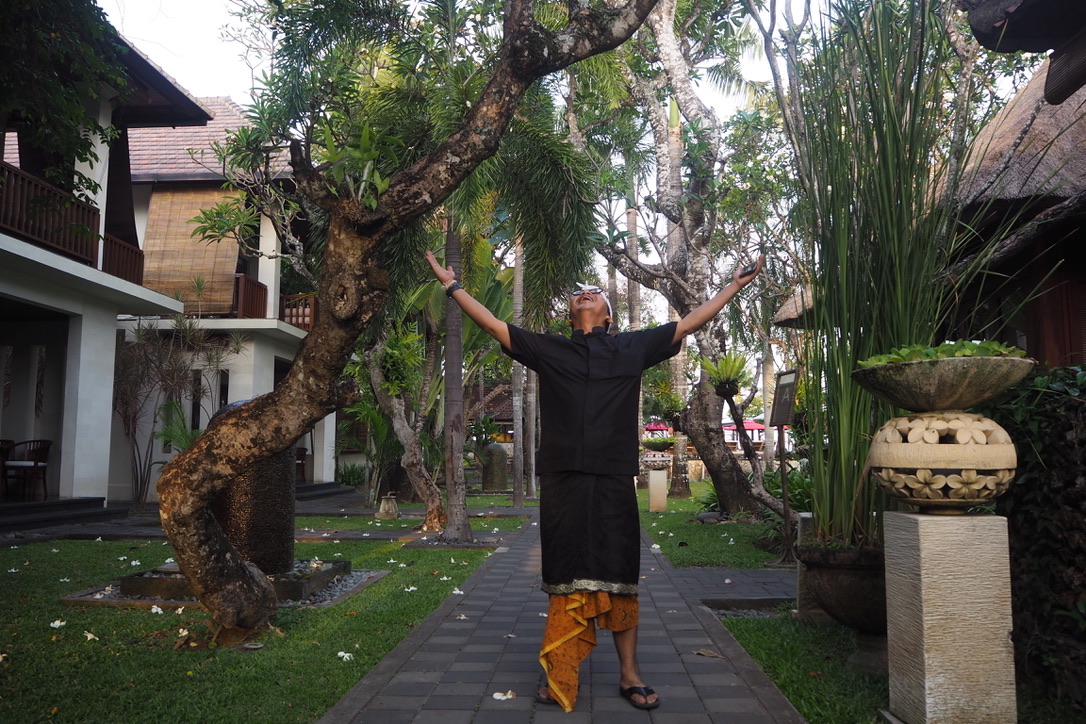Sustainable Tourism Proves More Profitable
As soon as he saw the plastic straw in the glass of juice that was served, Ida Bagus Sidhartha Putra immediately called his staff back. "How come you still use plastic straws? How ridiculous. We have replaced the paper ones," said the owner of the Griya Santrian Hotel, Sanur, Bali.
The staff immediately took the two juices off the table, and served them back with white and blue paper straws.
"Our problem is consistency. So we need strong leadership. At least in Bali," said Gus De, his nickname in mid-October. Gus De is not only the owner of Griya Santrian, one of the pioneering hotels in Sanur, Bali. He is also the Chairman of the Sanur Development Foundation (YPS), which oversees tourism actors in Sanur. Griya Santrian has other hotels such as Puri Santrian in Semawang and Royal Santrian in Tanjung Benoa, Badung. Gus De wants to show that tourism that applies the concept of sustainability both from a social, cultural and environmental perspective is actually more profitable. For example, using paper straws which are environmentally friendly compared to plastic straws.
Santrian Group has proven. Since its establishment 46 years ago, this hotel, which is right on the edge of Sanur Beach, emphasizes aspects of sustainability, including the environment. As soon as you enter the hotel area, the atmosphere feels more spacious and beautiful. It's not like cheap hotels (budget hotels) which increasingly fill other areas in Bali.
"We apply the concept in the basic building coefficient (building and land ratio), 40 percent. This means only 40 percent for buildings, 60 percent for supporters," said Gus De. Those supports, according to Gus De, include courtyards, gardens, ponds, and others.
In their newest and most expensive hotel, the Royal Santrian, the comparison between buildings and supporting facilities is even greater. With a land area of 3 hectares, the number of rooms at Royal Santrian is only 22. “This certainly gives more space for the environment. For example water absorption, but also the aesthetic factor," he said.
The atmosphere of the hotel looks more beautiful with large trees that are tens of years old. Most of them are trees that existed even before the hotel was built. Generally they are coastal tree species such as coconut and mangrove (Calophyllum inophyllum L.) or camplung in Balinese. The big trees were deliberately maintained like before there was a hotel. In some parts of the hotel, the rooms even follow the shape of a tree. It's not the trees that are cut down, but the buildings that adjust. Each tree contains a board with each name, such as kemoning (Murraya paniculata), oil palm (Elaeis guineensis Jacq.), and others. Each tree also contains information in English. "We also invite guests to plant trees at our hotel," he continued. He pointed out the tree on the page that read “Planted by Mr. Christian French & Family. September 2016”.
Sanur, which is famous for its beaches and sunrises, is one of the pioneers of tourism in Bali. Since the 1920s, this place has become a tourist destination. When most places in Bali are filled with towering cheap hotels, Sanur can relatively keep up. Lecturer at the Faculty of Tourism at Udayana University Nyoman Sukma Arida said Sanur was indeed more sustainable than other tourism centers in Bali, for example, Kuta. Apart from the focus on the market for mature tourism connoisseurs (elderly) it is also due to the strong role of traditional villages. "Sanur is also managed with the principle of small scale tourism," said the doctor in the field of ecotourism studies.
In general, hotels in Sanur are still in the form of cottages and bungalows with small and separate buildings. They also still allow a large, beautiful yard with shady trees.
One of the reasons why Sanur is still relatively well-maintained is the Denpasar Mayor Regulation (Perwali) No.6/2013 concerning Zoning Regulations for the Sanur Strategic Area. In general, this Perwali regulates Sanur in three zoning.
Another important thing is the commitment to protect the environment in the Sanur area, such as managing garbage and waste. It is also because of this commitment that Griya Santrian has received the annual Tri Hita Karana (THK) Award from the Tri Hita Karana Foundation since 2000.
Tri Hita Kirana is a Balinese concept of maintaining balance with three things, namely God (parahyangan), humans (pawongan), and nature (palemahan). This award is given to Bali tourism actors who are considered able to apply the THK concept in their operations. Gus De said that traditionally, the Balinese people have the wisdom to protect the environment. Apart from the THK concept, several rituals also aim to maintain the balance of nature, such as Tumpek Bubuh, a celebration to honor plants, and Nyepi, an activity to give the Earth a rest for 24 hours.
With its success in practicing sustainable tourism, including protecting the environment, hotels in Sanur actually get bigger profits. In terms of price, they are quite expensive. Griya Santrian, for example, has the cheapest price of almost IDR 2 million/night. Royal Santrian even up to IDR 5.3 million / night.
After all, although the price is more expensive, the occupancy rate is relatively stable, between 70-80 percent. When Bali is increasingly trapped in mass tourism, which emphasizes the number rather than the quality of tourists, it is important to remind again the importance of Bali implementing sustainable tourism. Including the environmental NGO WWF.
Since 2015, WWF Indonesia has launched the Signing Blue platform as a guide for sustainable tourism practices, especially marine tourism. Not only for business people but also tourists themselves. Maritime tourism business actors are divided into four, namely accommodation, trip organizers, restaurants and recreational boats. According to Indarwati Aminuddin, WWF Indonesia's National Coordinator for Sustainable Tourism, Signing Blue is expected to answer a number of current maritime tourism challenges. For example land conflicts, environmental exploitation, and marginalization of local residents.
"Without standardizing tourism management, we will not answer the challenges of sustainable development," said Indarwati.
Indarwati added that Signing Blue is not a certification, but she provides an assessment of the extent to which tourism businesses have implemented a number of criteria in their business. For example social, economic, or environmental aspects. In terms of the environment, for example, how do business actors pay attention to ecological footprints, waste management, and so on.
Criteria with numbers to indicate its application. There are five levels in the Signing Blue assessment called Bintang Laut. Starfish 1 means that the business manager is committed. Bintang Laut 5 has demonstrated concrete conservation efforts, including for example making blueprints in their business policies.
Currently, there are only seven members of Signing Blue in Bali. One of them is Griya Santrian, which received 2 Bintang Laut. Apart from that, there are also The Haven Bali and Sea Track which have received 3 Bintang Laut with The Santa Villa Ubud. In Indonesia, currently there are 104 companies participating in the Signing Blue. They are spread across 12 provinces with the largest number in Bali, NTB and NTT. "Not only stating a commitment, they have also implemented the principles of sustainability," said Indar. According to Indar, if the business is not managed wisely, slowly or quickly, ecosystems and natural resources will experience a decline in quality.
By applying the principles of sustainability, tourism business actors can obtain economic benefits because they increase the selling value of tourism actors. "Currently the majority of tourism businesses depend on healthy ecosystems, and in Indonesia, nature has been kind enough to provide everything needed," he added.
The same thing was conveyed by Gus De and Sukma Arida. “By increasing attention to sustainability, we can be able to increase tariffs. It increases the resale value. The environmental aspect is very influential on the selling price, "said Gus De.
Sukma added that sustainable tourism will provide greater benefits in the long term. "In the short term it may lose money, but sustainable tourism provides far greater non-financial benefits because it puts environmental elements as a guide," he said.
See the original article https://www.mongabay.co.id/2018/10/24/wisata-berkelanjutan-terbukti-lebih-menguntungkan/

